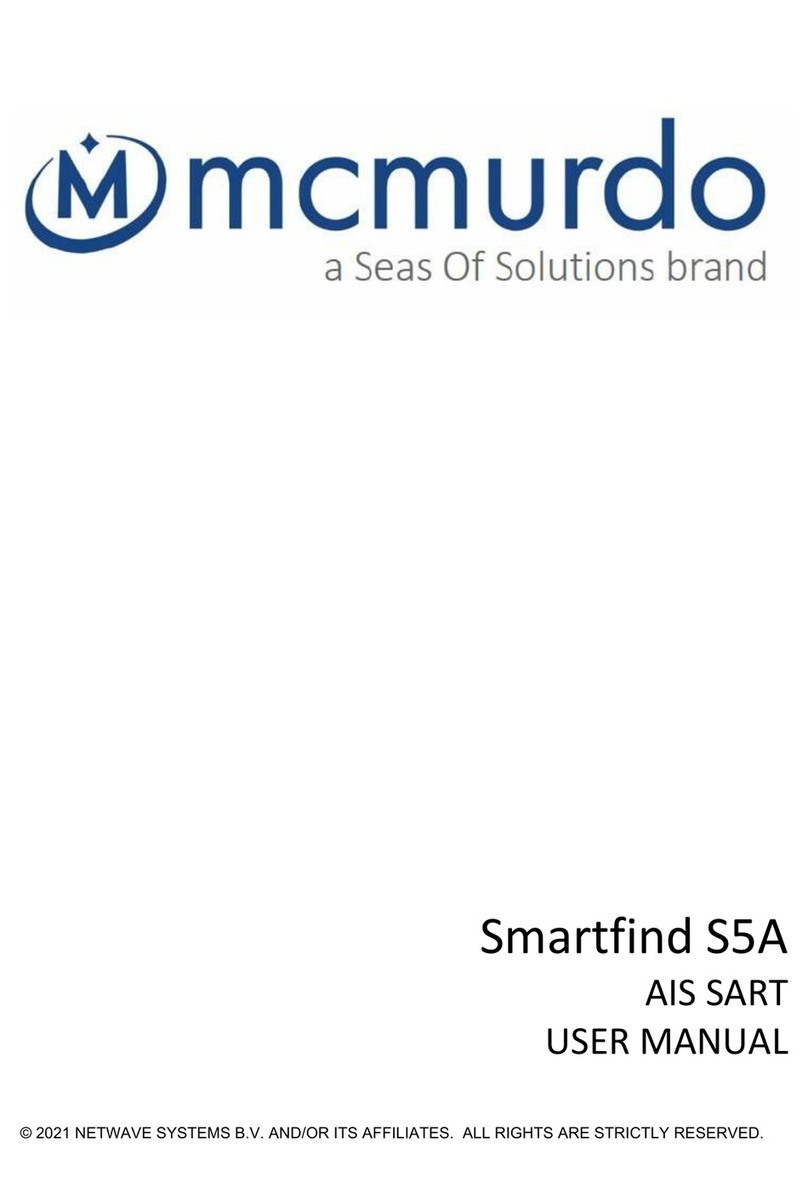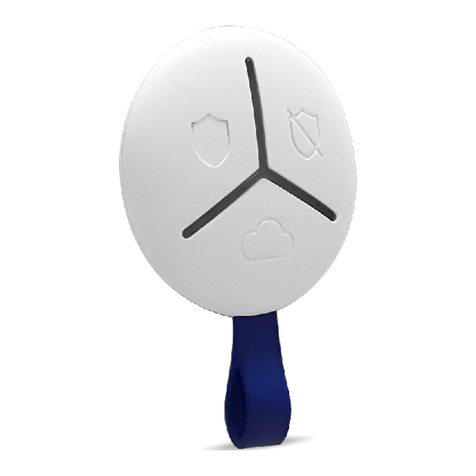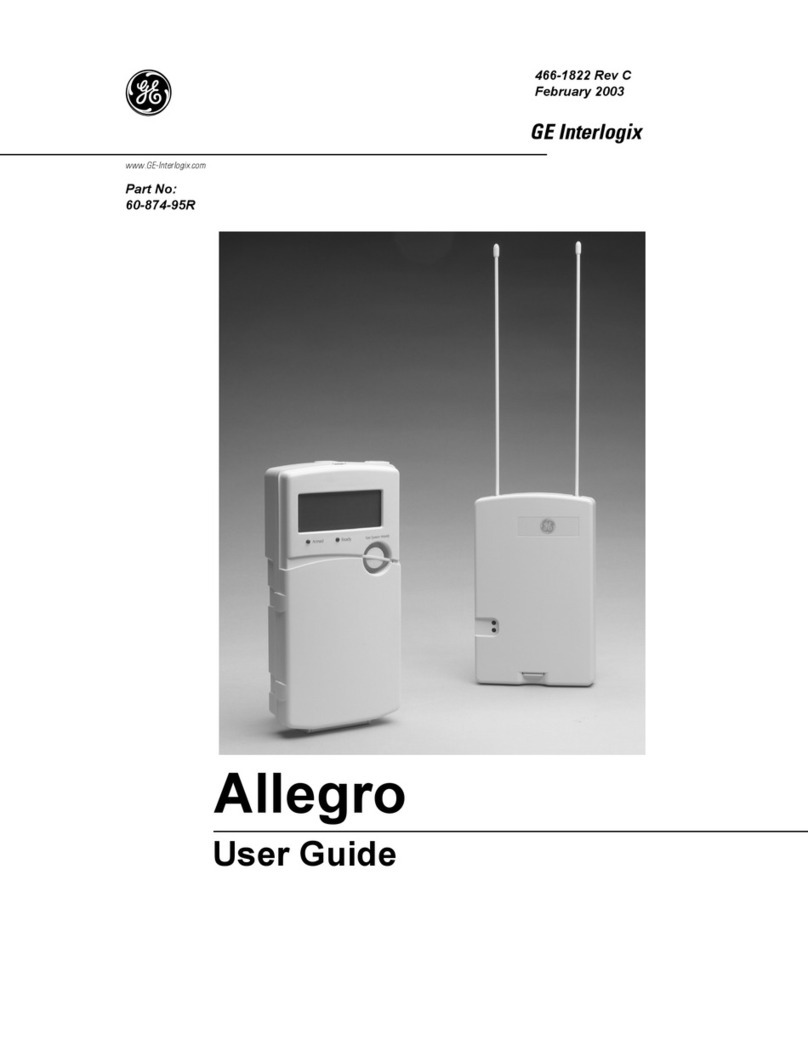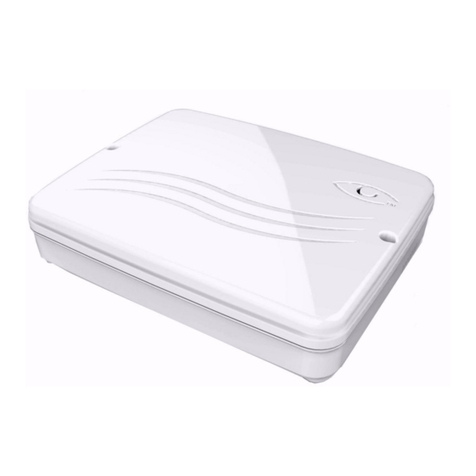Seas of Solutions FastFind CREW1 User manual

Water sensor Activation
4. Activating your Crew1
1. Crew1 Overview
Manual Activation
COPYRIGHT
DISCLAIMER
USER GUIDE
2. Equipment in the Box
NETWAVE SYSTEMS reserves the right to change this specification at any time without notice and hereby
specifically disclaims liability for any consequences of such action.
© 2022 SEAS OF SOLUTIONS BV AND/OR ITS AFFILIATES. ALL RIGHTS ARE STRICTLY RESERVED.
The entire contents of this user instruction manual, including any future updates, revisions, and modifications,
shall remain the property of Netwave Systems B.V. at all times. Unauthorised copies or reproduction of this
manual, either in part or whole, in any form of print and electronic media, is prohibited. The contents herein
can only be used for the intended purpose of this manual.
WARNING: An AIS MOB device is intended for use within the maritime environment where permitted by
national administrations. When activated, it transmits a digital alert message to any vessel or shore station in
radio range which is equipped with an AIS receiver. Deliberate misuse of the device could result in a penalty.
WARNING: Please carefully read the instructions and get familiar with the test and activation procedures
before using the device.
WARNING: An AIS-MOB Man overboard device is only intended for short range signaling to an AIS receiver
installed onboard your own vessel. It will not directly alert the emergency services or other vessels.
WARNING: An AIS MOB is designed for use with an AIS receiver and is not a substitute for a PLB or EPIRB.
WARNING: This equipment is not intended for routine tracking of persons or property. This includes routine
tracking of divers.
WARNING: Report occurrences of accidental activation to your local coastguard.
WARNING: If self-test is performed more frequently than once a month, then battery life may be reduced.
WARNING: Radio Licensing. This product is a radio transmitter. Some administrations may require that the
user holds a valid radio license to cover its ownership and use.
WARNING: Contains a magnet, Prevention of false activation, store well away from other strong
magnets.
Caution:
when deploying
antenna, be careful
in its spring action
to avoid eye injury.
1. Pull off the red antenna cap to release the antenna.
1. Antenna cap
2. Antenna
3. Battery LED (Green/Red)
4. Flashing LED
5. GPS LED (Green/Red)
6. Lanyard (to prevent loss of parts)
7. Self-Test zone
8. Water Sensor
9. Self-Test key, with magnet on the back side
10. Activation tab
The FastFind Crew1 AIS Man Overboard (MOB) device is designed to be carried by individual crewmembers and
used in the event of a Man Overboard situation or personal emergency. When activated it transmits an AIS MOB
message containing your position and ID via AIS (Automatic Identification System). The transmission will be
received by AIS equipped vessels within local radio range.
As the AIS MOB device includes an inbuilt GPS receiver, your current location is transmitted, dramatically
reducing the time taken to locate and increasing rescue capability even in poor visibility. FastFind Crew1 also
has a flashing white light to help rescuers pinpoint your precise location in the water.
The FastFind Crew1 is designed to be carried in the belt pouch provided. Alternatively, it can be fitted to
lifejackets using the clip options supplied, ready to be activated in the event of a man overboard situation. After
the lifejacket is inflated, pull the activation cord downwards, releasing the red cap and deploying the antenna.
Transmissions will start shortly after, and the light will flash. Crew1 can also be stored in a standby mode, ready
to automatically activate on contact with water.
2. Pull the activation tab off the Crew1 and the device
will start transmitting alert messages immediately
and the flashing light will operate.
2. When the water sensor embedded at the
bottom side of the device is immersed in water
for more than 3 seconds, the device will be
activated and starts transmission.
1. Pull off the red antenna cap to release the
antenna, leave the activation tab in situ, the device
is now ready in standby mode.
Caution:
when deploying
antenna, be careful
in its spring action
to avoid eye injury.
3. Installing Crew1 on a Lifejacket
1. Strap Clip
The Crew1 is supplied as standard with a webbing clip to attach the device to a
lifejacket strap.
2. Oral Tube Clip
The Crew1 is delivered with an alternative clip which can be attached to the
lifejacket’s oral tube. The Clip is designed to be installed on the left or right of the
oral tube and replaces the webbing clip all together.
1
2
3 4 5
6
10
8 8
1. AIS MOB unit with belt clip
2. Belt carry pouch
3. Oral tube adaptor clip
4. User guide
5. Self-Test key
- 1 - - 2 -
- 3 - - 4 -
S/N(UNIQUE ID):
972160001
JUL 2015
BATTERY EXPIRY:
7
9
www.seasofsolutions.com
sales@seasofsolutions.com

Take the Crew1 outside under a clear view to the sky. Start the test by using the
magnet found on the back side of the test key, touch the magnet to the “Test Area”
label marking. Just like the Battery Test, the white light will flash once, and the device
will beep once. Hold the magnet next to the Test Area for 3 additional seconds until
a second audible beep is heard, indicating the Crew1 has started the Full Function
Test. The battery LED and GPS LED will commence to flash every 3 seconds to
indicate the battery status and GPS locating status:
6.2 Full Function and GPS Test
The green battery LED indicates that the battery is okay. If the battery LED flashes red , this
indicates low battery power, and the battery needs to be replaced.
The green GPS OK LED indicates that a GPS fix is achieved, or a red GPS LED means that NO
GPS position fix is obtained.
The flashing white light will flash once, and the audible beeper will beep once
signifying the device has entered battery life test mode. The green LED will flash to
indicate that the battery is okay. A red flash LED indicates low battery power, and
battery needs to be replaced. The Crew1 will flash 3 times and beep once again to
end the test.
Note:
1. You can interrupt the test mode any time by pulling off the activation tab and then re-inserting the tab. Please
note, when in test mode, the device will not transmit a alert message.
2. The MOB TEST message generated by a full function test will should appear on all chart plotters with AIS within
local radio range in the form of a SRM (Safety Related Message). The message is “MOB TEST” with the device’s ID
MMSI number as sender’s identity. Note: In case the MOB TEST message is not received, check the vessels AIS
equipment and ensure AIS“SART TEST” is enabled.
7. Specification
Note:
When activated, the flashing white light will flash SOS signal in Morse code format every minute.
When activated, the device will transmit an AIS MOB ACTIVE message every minute with Lat/Lon position
information. In case the GPS location cannot be updated due to weather conditions, the last obtained Lat/Log
GPS position will be sent.
Not all chart plotters with AIS show the correct icon as recommended by the IMO. As a minimum, they will
show the same icon as used for other craft normally an . The ID MMSI number dedicated for AIS MOB begins
always with 972 which will differentiate AIS MOB from normal AIS targets.
Ensure the Crew1 remains out of the water, as direct contact with water will reduce the transmission range and
could cause difficulties in obtaining GPS coordinates.
Ensure that the GPS“do not block” zone is not shielded or covered and is with a clear view of the sky.
It is recommended that the Short Test is performed monthly. Return the Crew1 to a service centre for battery
replacement if battery level is low.
Confirm that the battery expiry date shown is in date for the duration of intended use.
This product emits low levels of radio frequency energy during operation. Avoid handling the antenna once
activated.
Avoid cleaning the unit with chemical solvents as this may damage the case material.
1.
2.
3.
4.
5.
7.
6.
9.
8.
As soon as the GPS position fix is achieved, the device will send a MOB TEST message, which will be displayed with
a icon on AIS systems within radio range. The Full Function Test will then terminate automatically sounding a
beep, after 8 burst of test messages are successfully sent. When no valid GPS position fix is obtaining within 5
minutes, the Full Function Test is regarded as failed and will automatically terminate with a beep.
If the Full Function Test fails, move the Crew1 to a new outside location and make sure that the antenna is pointing
towards the sky and the“GPS Area” label marking is not obstructed by hand or other objects. When the Full Function
Test fails a second time, return the device to your service center.
- 7 -
- 5 - - 6 -
- 8 -
- 9 - - 10 -
6.1 Battery life test
Start the battery life test by placing the magnet found on the back side of the test
key on the ”Test Area”label marking for one full second.
5. Turning off your Crew1
6. Testing your Crew1
5.1 Closing the red antenna cap
Align the red antenna cap with the unit, the longer side facing the front and the shorter side facing the back.
Push the red antenna cap all the way until the antenna cap clip clicks fully home. Take care not to trap the
lanyard cord under the side of the cap. The proper fitting of the red antenna cap ensures the water sensors are
properly sealed from the elements and thus prevent the unit from being activated when wet.
Insert the activation tab back in the unit and the transmission will cease. When the unit is activated by the water
sensor, pull the activation tab off, and then reinsert the tab subsequently to turn off the transmission. Put the
antenna back to its original position by wrapping around the unit and securing with the antenna cap.
www.seasofsoluons.com
Type: Z620
www.seasofsolu
ons.com
Type: Z620
www.seasofsoluons.com
Type: Z620
The device is equipped with self-test capability to perform 2 different tests to ensure the beacon is working
perfectly. The first is a battery life test to check the beacon’s battery power. The second test is a GPS self-test
that includes GPS activation and live test message transmission.
EC Declaration of Conformity
Battery
The lithium metal battery in Crew1 should be replaced only by an Netwave Systems authorized service provider
and must be recycled or disposed of separately from household waste. Never attempt to replace the Crew1
battery yourself.
Do not recharge, puncture, deform, short-circuit the lithium batteries contained in the product or put it in fire.
The small lithium metal batteries contained in the device can normally be carried on passenger aircraft in carry-on
baggage as a personal item. Always check with air carrier for any additional restrictions.
•
•
•
Hereby Netwave Systems B.V. declares that the Type Z620 (Crew1) is in compliance with the essential requirements
and other relevant provisions of the Radio Equipment Directive (RED) 2014/53/EU on radio and telecommunications
terminal equipment. A copy of the Declaration of Conformity can be obtained on-line from: https://www.seasofso-
lutions.com/support/mcmurdo/marine-products/
RF Exposure warning
Warning: This device generates and radiates RF electromagnetic energy and requires a Maximum Permissible
Exposure radius of 20cm during operation.
End of Life Statement
The symbol above means that your product and/or its battery shall be
disposed of separately from household waste according to local laws
and regulations.
Note: Specifications are subject to change without prior notice.
Frequency
Data Rate
Tx Power
Bandwidth
Modulation
Range
AIS Message Type
AIS 1, 161.975MHz
AIS 2, 162.025 MHz
9,600bps
2W (1W EIRP)
25 KHz
GMSK
4nm typical with receiver antenna > 5m above sea level
Message 1 (TXID, GPS position, SOG, COG)
Message 14 (MOB ACTIVE or MOB TEST)
GPS PERFORMANCE
Receiving Channels
Frequency
Tracking Sensitivity
Reacquisition
Position Accuracy
Type
Operating Time
Storage (battery life)
Lithium metal (non-rechargeable)
36 hours at -10°C, typical
5 years, replacement due after emergency use
ENVIRONMENTAL
Operating Temperature
Storage Temperature
Waterproof
Immersion Depth (optional)
Compass Safe Distance
-20°C~55°C
-30°C~70°C
IP67
50m
0.8m
GENERAL/PHYSICAL
Model No.
Size (L x W x D)
Weight
Z620
129 x 52 x 40mm
160 g (main unit only)
APPLICABLE STANDARDS
VHF PERFORMANCE
BATTERY
ACTIVATION METHOD
IEC 60945
IEC 61108-1
EN 50383: 2010
EN 62368-1: 2014 + A11: 2017
Manual activation or automatic activation with water sensor by immersion
EN 303098 V2.2.1
IEN 50385: 2002
EN 62311: 2008
72
L1, 1575.42 MHz
(-)163 dBm
(-)159 dBm
<2.0 m SBAS
<2.5 m Autonomous
AT
Authorisation of use is required
HR SE EE
FI
CZ
NL
EL
CY
RO
IT UK(NI)
BE HU SI
FR DK
DE
LV
PL LT
BG IE SK MT
PT LU
ES
Other Seas of Solutions Security System manuals
Popular Security System manuals by other brands

Aiphone
Aiphone VIDEO SENTRY PANTILT MY-1CD Installation & operation manual
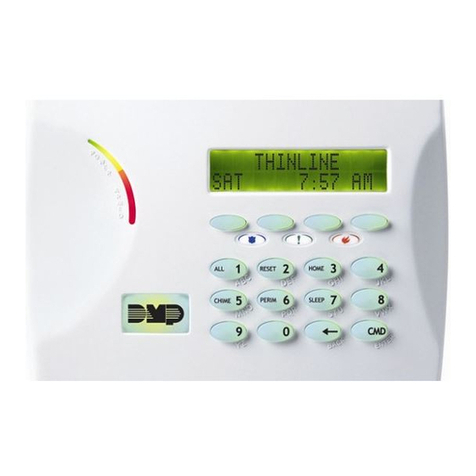
DMP Electronics
DMP Electronics XR150 series user guide
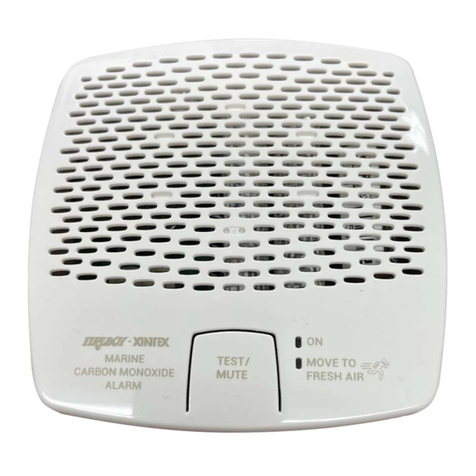
Fireboy- Xintex
Fireboy- Xintex CMD6-MB Owner's Manual & Installation Instructions
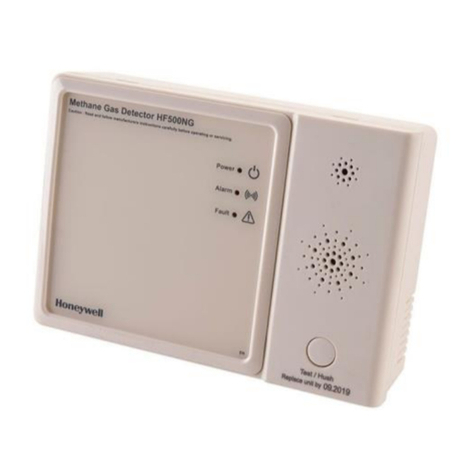
LEGRAND
LEGRAND Tynetec ZXT813 quick start guide

Petroline-A
Petroline-A OK-150 Operation manual
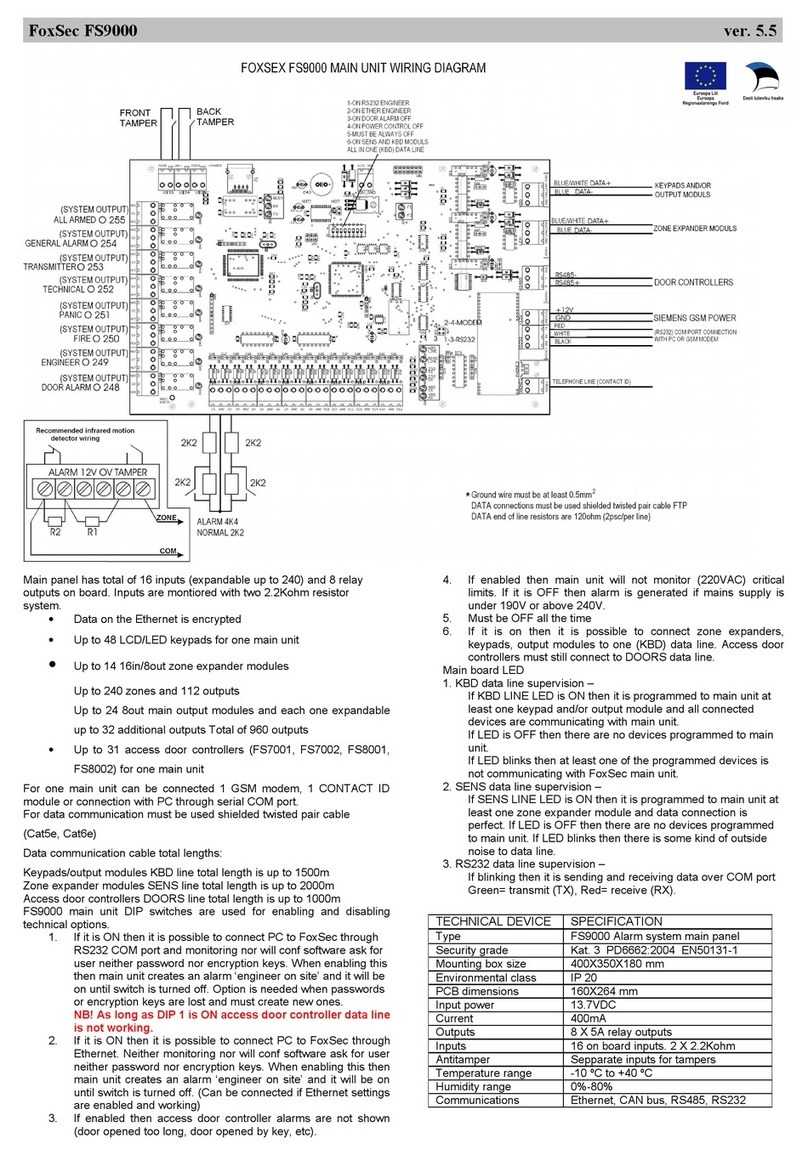
Hardmeier
Hardmeier FoxSec FS9000 Wiring diagram
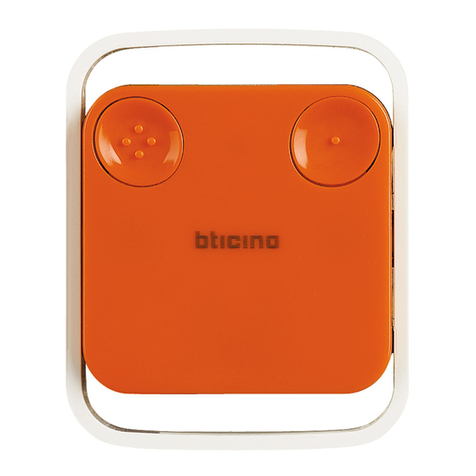
Bticino
Bticino 348220 quick start guide

American Dynamics
American Dynamics Intellex DV16000 Application note
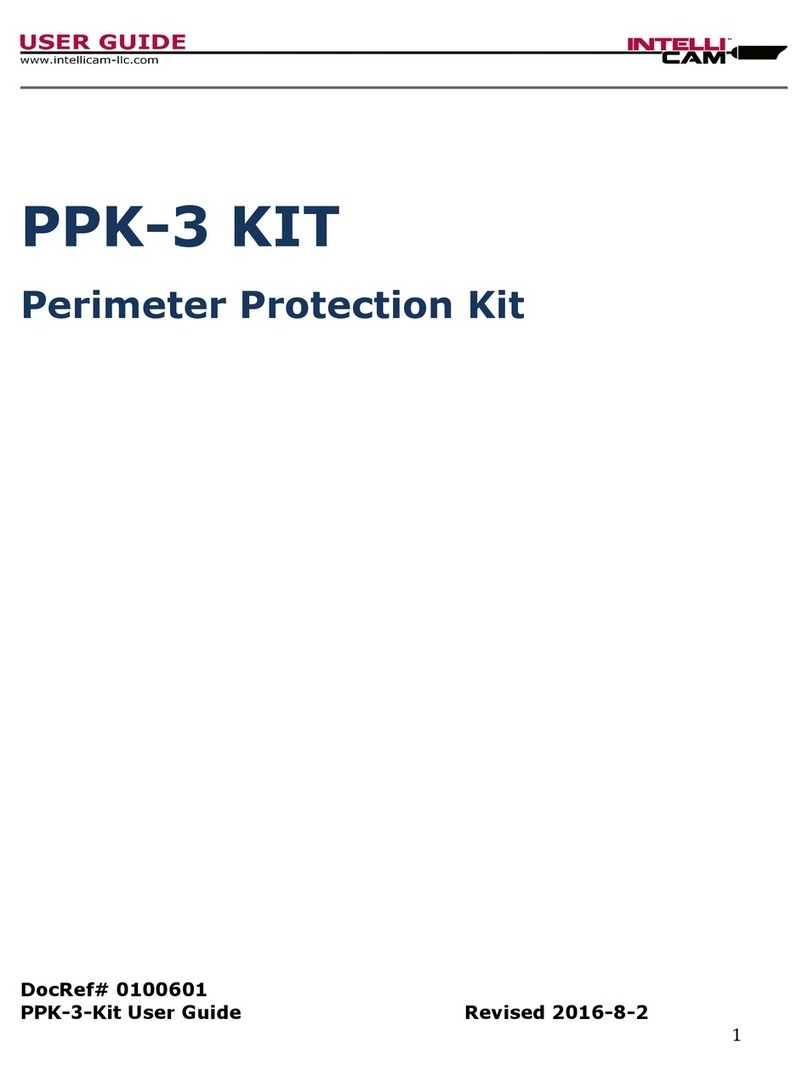
IntelliCam
IntelliCam PPK-3 KIT user guide

EVERSPRING
EVERSPRING SE812 user manual
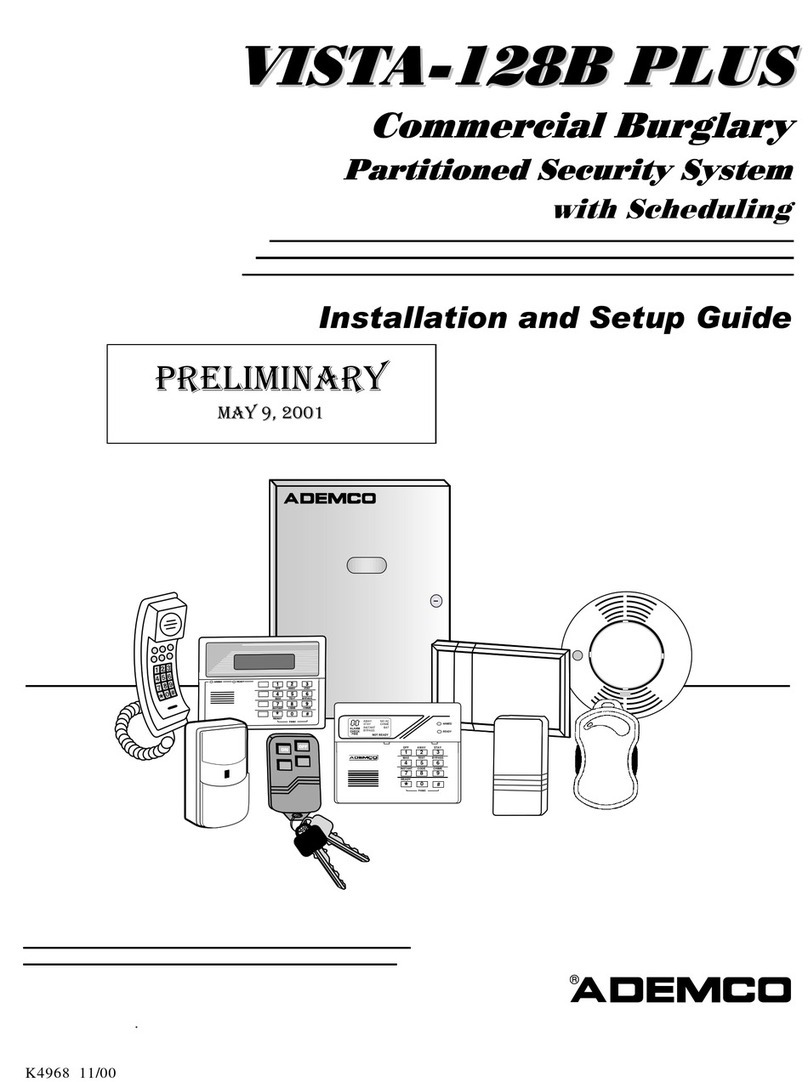
ADEMCO
ADEMCO Vista-128B PLUS Installation and setup guide
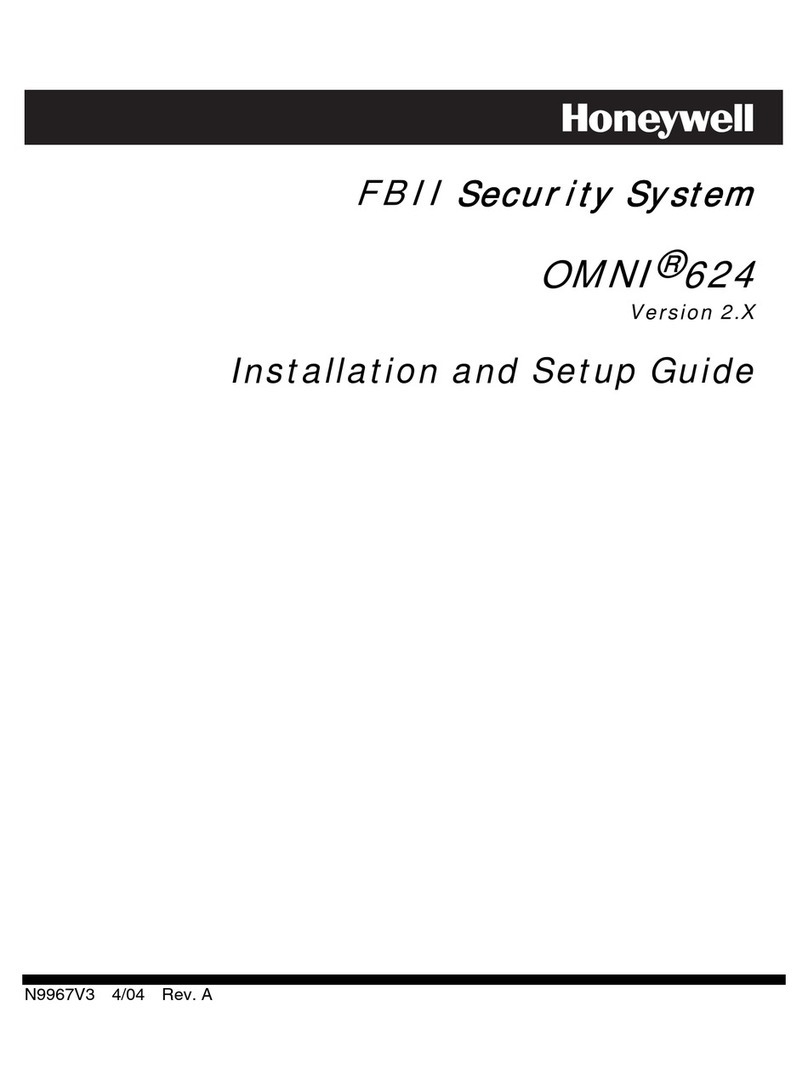
Honeywell
Honeywell FBII OMNI 624 Installation and setup guide
